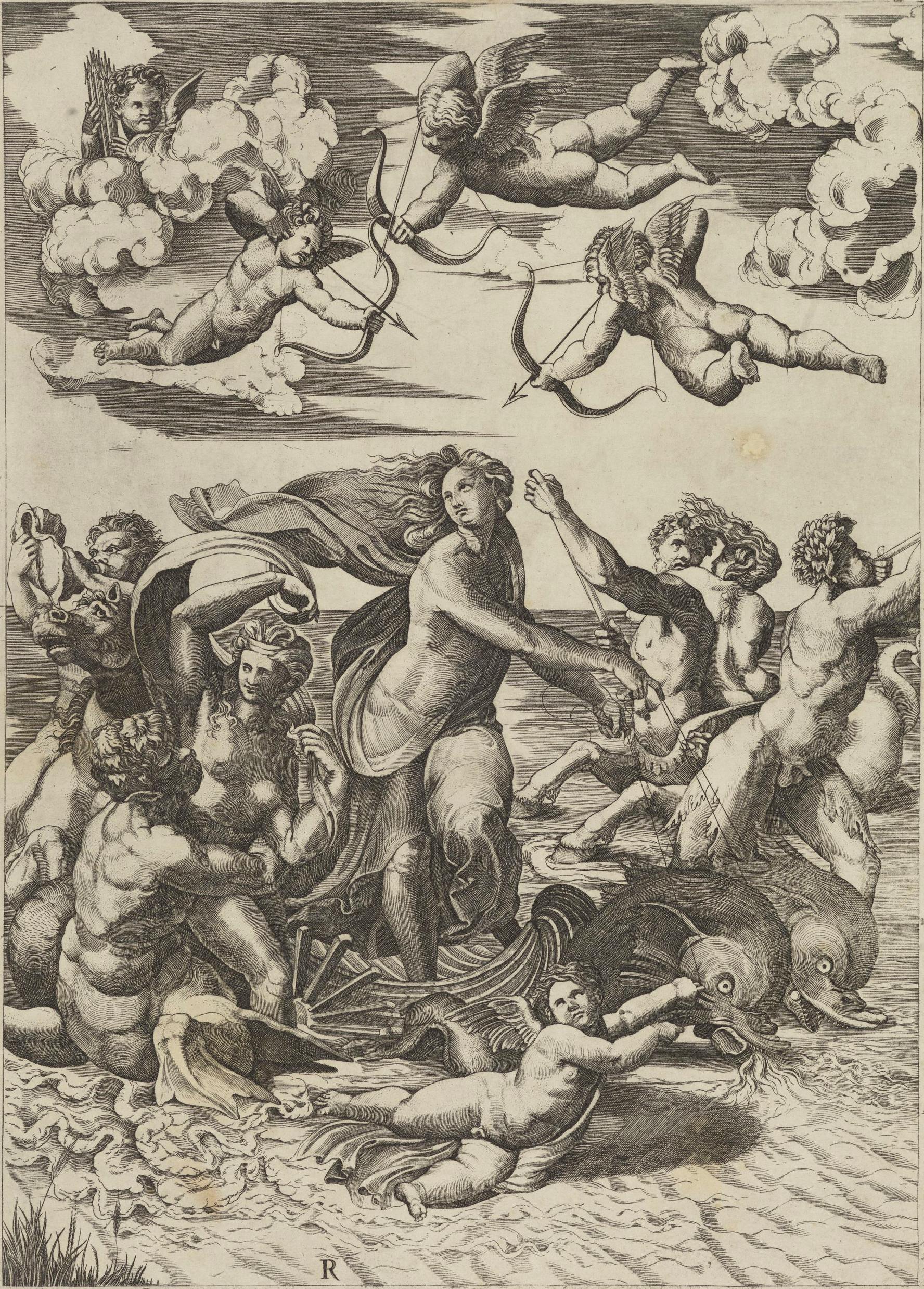The Triumph of Galatea
Marco Dente da Ravenna (Ravenna 1493 c. – Roma 1527), da Raffaello
The famous fresco painted by Raphael in 1512 in the suburban villa of Agostino Chigi was the subject of many graphic interpretations, and indeed the prints were promoted by the master himself as an effective means of distributing his works. For his representation of Galatea in the fresco, Raphael evokes figurative sources from the classical sculpture, and at the same time, rather than drawing inspiration from the iconography of ancient texts, he represents the nymph's triumph through direct inspiration from the rhymes of the “Stanze per la Giostra”, composed by Angelo Poliziano around 1475-78 with the overt intention of celebrating the Medici family.
The same subject also features in another famous engraving by Marcantonio Raimondi, considered by Vasari to be one of his most successful works.
This refined interpretation by Marco Dente has led to speculations on the dynamics of reciprocal influences and precedence among Raphael’s engravers, with the numerous engraving plates realized during that period giving an indication as to the huge public demand for these images. The superbly rendered mythological subject and the fame of the original painting, located in such a prestigious location, immediately opened these graphic models to a multitude of figurative interpretations across a vast range of mediums.
